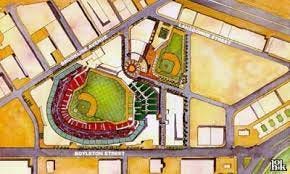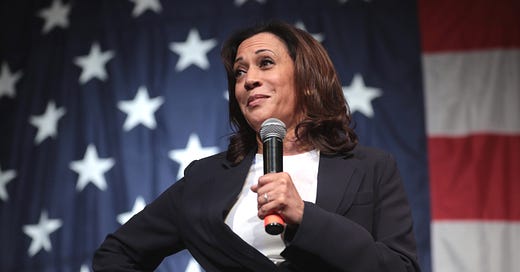Did Biden wait too long to pull the ripcord? | Nantucket off-shore wind mess shouldn’t have come as a surprise | A late Boston business great’s behind the scenes impact | Healey administration to seek bidders for grim downtown Boston “superblock” | “Vance VP” a howl of a parody song | Quick hits |
News tips? Story ideas? Email us at sbvanvoorhis@hotmail.com
Jack Connors’ hidden legacy revealed: Late Boston business giant helped save Fenway Park from the wrecking ball
It was the summer of 2000 and I was a young Boston Herald reporter covering one of the biggest and most competitive stories in the city.
Red Sox chief and de facto owner John Harrington was leading a drive to tear down Fenway Park, seize and demolish a swath of neighboring buildings and businesses, and plop down a new, $650 million-plus stadium on the land.
The Herald was out front poking holes in this arrogant, prohibitively expensive, and foolish plan, but Harrington and the Sox could count on support from The Boston Globe, the city’s top news outlet, to carry their water.
John Sasso, who ran Dukakis’ 1988 presidential campaign and was the team’s chief political strategist, had managed to secure hundreds of millions of dollars in public subsidies from the state Legislature after an exhausting, months-long lobbying marathon.
Meanwhile, the Globe’s lead reporter on the Sox stadium push was “romantically linked” with Sasso, according to the now defunct Boston Phoenix.
Oh yeah, and the Globe and the Sox also shared the same law firm and bankers as well.
Maybe not so surprisingly, the Globe churned out a series of dubious insider scoops that claimed the Sox were making great strides behind the scenes advancing their albatross of a stadium plan.
To read the Globe at the time, you would have believed that the Sox were close to winning over the Fenway business and property owners who had the bad luck to occupy the acreage the team was trying to take for its new stadium.
Of course, nothing could have been further from the truth. And Connors - one of the city’s leading business and civic leaders who had played a key role winning state backing for the stadium plan - knew it.

Lenders didn’t want anything to do with the plan. On top of that, the late Stephen Mindich, publisher of the Boston Phoenix, was waging an all-out war against the proposal, with the paper and its building in the midst of the proposed demolition zone for the so-called New Fenway Park.
The team even had City Hall in its pocket, with the Boston Redevelopment Authority threatening to take the land the Sox wanted by eminent domain, if necessary. Yet it still wasn’t enough to get the Phoenix owner and other businesses to budge.
It was against this backdrop, as summer turned to fall, that I met with Connors, an advertising industry titan and a city business and civic leader.
Connors himself would not go on the record. However, I was soon able to report that key business leaders were urging the Red Sox and Harrington to drop their white elephant of a stadium plan and start exploring whether it would be possible to renovate antique Fenway.
It’s hard now, decades later, to convey this properly, but the idea that Fenway Park could be saved was pure heresy at the time.
The Sox and Harrington had spent years, and who knows how many millions, on engineers and contractors to come up with studies showing the old ballpark was so run down and decrepit as to be beyond redemption.
The only solution, they said, was to tear the ballpark down and build a mega stadium next door.
The Herald duly splashed my story on the front page, triggering an irate call from the high-powered PR exec the Sox had hired to sell the stadium plan to the press and public.
The Herald had made a huge mistake in running the story, she yelled, insisting that the engineers hired by the team had proved that it was impossible - literally impossible! - to save the 1912 ballpark.
Of course, as we know now, that was nonsense. Far from being irresponsible, the Herald, with an assist from Connors, did the public a huge service, helping to short-circuit a plan that would have ripped apart one of the city’s most vibrant neighborhoods.
Connors died last week at his Brookline home at the age of 82.
You can add this crucial, behind-the-scenes intervention at a key moment in recent Boston history to Connors’ already amazing legacy. The visionary business and civic leader is being rightly being remembered for his amazing generosity in helping the poor and disadvantaged, from giving away $100 million of his own money to starting Camp Harbor View for disadvantaged Boston youths.
Back to our story: a little over two months later after my meeting with Connors, at the end of October 2000, Harrington announced that the Yawkey Trust would be selling the team.
The rest is history, with John Henry and Tom Werner eventually winning a bidding war in December 2001 to buy the Sox.
The stadium plan was tossed in the circular file and Fenway Park, as well as a significant chunk of the neighborhood around it, was saved from the bulldozers.
Henry’s ownership group went on to pump more than $200 million into renovating old Fenway, making it one of the most successful - and beloved - MLB ballparks in the country.
The billionaire went on to buy the Globe as well, officially putting the Sox and the paper on the same team.
Close call: Biden’s 11th hour withdrawal from the race all but rules out the idea of an open competition for his replacement
When even The Wall Street Journal is offering grudging praise, then you know that Kamala Harris’ presidential campaign has gotten off to a surprisingly strong start.
But the timing of Biden’s withdrawal - mere weeks before the party’s nominating convention in August - effectively put the kibosh on the idea of any real contest for a replacement candidate.
Keep reading with a 7-day free trial
Subscribe to Contrarian Boston to keep reading this post and get 7 days of free access to the full post archives.




